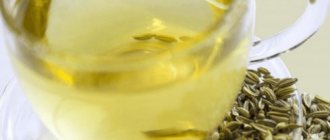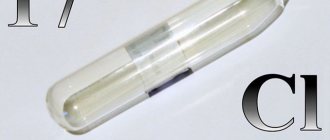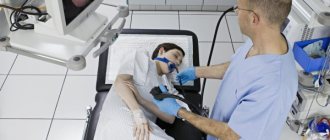Carbon monoxide, or carbon monoxide (chemical formula CO), is an extremely poisonous, colorless gas. It is an obligatory product of incomplete combustion of carbon-containing substances: it is detected in automobile exhaust gases, cigarette smoke, smoke from fires, etc. Carbon monoxide has no odor, so it is impossible to detect its presence and assess the concentration in the inhaled air without instruments.
Source: depositphotos.com
Once in the blood, carbon monoxide displaces oxygen from its connection with the respiratory protein hemoglobin and inhibits the functioning of active centers responsible for the formation of new hemoglobin, thereby causing acute oxygen starvation of tissues. In addition, carbon monoxide disrupts the flow of oxidative processes in the body.
Carbon monoxide, which has a high affinity for the respiratory protein, attaches to it much more actively than oxygen. For example, if the concentration of CO in the inhaled air is only 0.1% of the total volume (the ratio of carbon monoxide and oxygen is 1:200, respectively), hemoglobin will bind equal amounts of both gases, i.e. half of the respiratory protein circulating in the systemic bloodstream will be occupied by carbon dioxide gas.
The breakdown of the carboxyhemoglobin molecule (hemoglobin-carbon monoxide) occurs approximately 10,000 times slower than the oxyhemoglobin molecule (hemoglobin-oxygen), which determines the danger and severity of poisoning.
Car exhaust gases contain a maximum of 13.5% carbon monoxide, with an average of 6-6.5%. So, a low-power 20 hp engine. With. produces up to 28 liters of CO per minute, creating a lethal concentration of gas in the air within 5 minutes in a closed room (garage, repair box).
Characteristic symptoms of poisoning appear after 2–6 hours of inhalation of air containing 0.22–0.23 mg of carbon monoxide per liter; severe poisoning with loss of consciousness and death can develop after 20-30 minutes at a carbon monoxide concentration of 3.4–5.7 mg/l and after 1-3 minutes at a poison concentration of 14 mg/l.
What is carbon monoxide?
Carbon monoxide is a colorless and odorless substance. Another name for this compound is carbon monoxide. The formula of carbon monoxide is CO. This substance is not considered to pose much of a hazard at room temperature. High toxicity occurs if the atmospheric air is very heated. For example, during fires. However, even a small concentration of carbon monoxide can cause poisoning. At room temperature, this chemical rarely causes symptoms of severe intoxication. But it can cause chronic poisoning, which people rarely pay attention to.
Carbon monoxide is found everywhere. It is formed not only during fires, but also under normal conditions. People who own cars and smoke deal with carbon monoxide every day. In addition, it is contained in the air. However, its concentration is significantly higher during various emergency situations. The permissible content of carbon monoxide is considered to be 33 mg/m3 (maximum value), the lethal dose is 1.8%. As the concentration of a substance in the air increases, symptoms of hypoxia develop, that is, lack of oxygen.
Situations in which people “go crazy”
Fire
First of all, a person suffocates from smoke. This, of course, is not only carbon monoxide, but also toxic combustion products of all synthetics and plastics. Moreover, not only the residents of the affected apartment, but also the neighbors above can be poisoned by smoke. Faulty gas appliances. If everything is clear about the fire, then it is difficult for a non-professional to notice breakdowns in the column. It seems to work as always, maybe the flame is just not so blue, but who is looking at it?
Gas appliances
Gas water heaters in the bathroom are especially dangerous. A closed space, a locked door... 10 minutes, we lose consciousness, and no one will come to help. The main reason is a violation in the ventilation drainage and self-installed gas appliances. Methane-fired stoves fall into this category. Don't forget to open the windows while cooking!
Death in the garage
We have heard so many of these terrible stories! Young, full of energy, often in pairs (a man and a woman), or whole companies. And they heard it, and they know it. But for some reason we again hope for “maybe”, for the fact that “I’m not a fool.” And they start the engine in the garage. Mainly for the purpose of keeping warm in cold weather, because a garage is a second home for a man, where he feels freedom. Again, you can drink with friends and talk about women. Or do some repairs. Exhaust gases contain up to 3% CO, in older carburetor engines it can reach up to 10%. In a closed garage, death occurs within 5 minutes after starting the engine. But few people know that poisoning can also occur when the garage door is open, it just takes a little longer.
Stoves and fireplaces
Previously, this was the most common cause of fires - a prematurely closed chimney damper. You need to catch the moment when there is no longer a burning fire, but the coals are still red and have not cooled down. There are fewer and fewer ovens now, but they exist. Country houses with fireplaces, baths, saunas, heated with wood. So warm, natural, with a pleasant smell. But yes, they can also cause death.
Grill and barbecue equipment
Well, Russian people really love meat. Especially grilled over charcoal. At the same time, the man imagines himself almost as a breadwinner in a primitive communal society. But you can’t escape civilization. There is demand - there is supply. Here are portable grilling setups for you. Place it wherever you want, take it with you on a hike, to the dacha, hunting, fishing. Of course, you should fry outside, we all know. What if the meat is already marinated and the weather turns bad? Don't cancel it. We move again to the garage, or to a tent. Alcohol is our constant companion. The holiday was a success. But not always...
Poisoning on the freeway
Did you know that a busy road with heavy traffic can sometimes produce deadly levels of carbon monoxide? A person can become poisoned if he is near a highway, or in a car with an open window. There was a case when a truck driver fell asleep in his car parked on the side of the road and did not close the window. Yes, he didn't wake up. This also includes deaths while driving in tunnels. Or in a stalled car when the ventilation of exhaust gases is impaired.
Causes of carbon monoxide poisoning
The main cause of poisoning is considered to be the harmful effects of carbon monoxide on the human body. This occurs if the concentration of this compound in the atmosphere is higher than the permissible limit. What causes carbon monoxide levels to increase? There are several factors that cause the formation of carbon monoxide:
- Fires in confined spaces. It is a known fact that most often death in fires occurs not due to direct exposure to fire (burns), but due to hypoxia. The low supply of oxygen to the body is due to the increased amount of carbon monoxide in the air.
- Stay in specialized institutions (factories, laboratories) where carbon monoxide is used. This substance is necessary to synthesize various chemical compounds. Among them are acetone, alcohol, phenol.
- Failure to comply with the rules for operating gas equipment. This includes running water heaters and stoves.
- Malfunction of stove heating. High concentrations of carbon monoxide are often observed due to poor draft in ventilation ducts and chimneys.
- Staying with cars for a long time in an unventilated garage or box.
- Tobacco smoking, especially hookah.
In the situations listed above, you should constantly pay attention to changes in well-being. If there are signs of illness, you need to seek help. If possible, it is worth purchasing a carbon monoxide detector. It is most needed in poorly ventilated areas.
Mechanism of toxic action
Carbon monoxide, when inhaled, enters the bloodstream and binds there to hemoglobin, a protein that delivers oxygen to all our organs. There is oxygen in the tissues - there is life.
We will not dive into biochemical details, but hemoglobin loves CO very much, and “gives itself” to it with a force 200 times greater than its craving for the oxygen we need. Moreover, their love is very strong and long-lasting, one would be envious if it were not so sad.
Therefore, when carbon monoxide appears in the air, hemoglobin binds to it much faster, and there is much less space left for oxygen. Instead of oxyhemoglobin, the amount of carboxyhemoglobin in the blood increases, and less and less oxygen enters the tissues. The higher the concentration of CO in the air, the faster the cells die. And the most sensitive of them are brain cells.
Normally, there is always carbon monoxide in the atmosphere (about 0.01%). When its concentration reaches 0.1%, more than half of the hemoglobin in the blood is already bound to it. This union is falling apart very slowly. After removing the source of carbon monoxide, half of the carboxyhemoglobin will still remain in the blood after 4-6 hours. The use of pure oxygen reduces this period to 50-60 minutes.
In addition to hemoglobin, CO also binds to the protein myoglobin, paralyzing the contraction of muscle fibers. Damage to the heart muscle leads to cardiac arrest.
Effects of carbon monoxide on the body
Why is carbon monoxide dangerous for the body? This is due to the mechanism of its effect on tissue. The main effect of carbon monoxide on the human body is to block the delivery of oxygen to cells. As is known, the hemoglobin protein contained in red blood cells is involved in this process. Under the influence of carbon monoxide, oxygen transport to tissues is disrupted. This occurs as a result of protein binding and the formation of a compound such as carboxyhemoglobin. The consequence of such changes is the development of hemic hypoxia. That is, the cause of oxygen starvation is considered to be damage to red blood cells. In addition, there is another harmful effect of carbon monoxide on the human body. It has a detrimental effect on muscle tissue. This occurs due to the binding of carbon monoxide to myoglobin. As a result, there are disturbances in the functioning of the heart and skeletal muscles. Severe consequences of hypoxia of the brain and other organs can lead to death. Most often, violations occur during acute poisoning. But chronic intoxication cannot be ruled out.
Algorithm for providing first aid at home
So what should you do if you have carbon monoxide poisoning? To save a life you should:
- call an ambulance immediately;
- keep calm and act consistently, quickly and clearly (although this is difficult for many);
- put on a gas mask or make a mask from improvised materials;
- evacuate a person to the street;
- remove clothing that restricts breathing;
- in case of mild poisoning, give the injured person strong tea, cover with a warm blanket, and ensure a calm environment;
- in case of moderate severity, place the person on a flat surface and turn him on his side. Soak a cotton swab in ammonia and let it smell at a distance of 2 cm;
- in case of acute poisoning, perform cardiac massage and perform artificial respiration.
There is no need to do anything else at home until the doctors arrive. Further treatment of the patient depends on his condition.
Symptoms of carbon monoxide poisoning
The main damaging effects of carbon monoxide are directed towards tissue of the brain, heart and skeletal muscles. Damage to the central nervous system is characterized by the occurrence of the following symptoms: headache, nausea, decreased hearing and vision, tinnitus, impaired consciousness and coordination of movements. In severe cases, a coma and convulsive syndrome may develop. Changes in the cardiovascular system include the occurrence of tachycardia and chest pain. There is also a decrease in muscle tone and weakness. The patient has difficulty breathing and tachypnea is noted. The skin and mucous membranes are hyperemic.
In some cases, atypical clinical forms of poisoning occur. These include symptoms such as fainting and euphoria. In the first case, short-term loss of consciousness, decreased blood pressure, and pale skin are observed. The euphoric form is characterized by psychomotor agitation, the development of hallucinations, and delusional ideas.
Signs of poisoning depending on CO concentration
| CO concentration, % | Time of onset of clinical manifestations | Signs |
| Up to 0.009 | 3-5 h |
|
| Up to 0.019 | 6 hours |
|
| 0,019-0,052 | 2 hours |
|
| Up to 0.069 | 2 hours |
|
| 0,069-0,094 | 2 hours |
|
| 0,1 | 2 hours |
|
| 0,15 | 1.5 h | |
| 0,17 | 0.5 h | |
| 0,2-0,29 | 0.5 h |
|
| 0,49-0,99 | 2-5 min |
|
| 1,2 | 0.5-3 min |
|
Diagnosis of carbon monoxide poisoning
Help for carbon monoxide poisoning can only be provided if such a condition is diagnosed in time. After all, symptoms of hypoxia are observed in various diseases. You should pay attention to the patient’s living conditions and place of work. If the house has stove heating, you need to find out how often the room is ventilated. If carbon monoxide poisoning is suspected, a blood gas test should be performed. With moderate severity, the concentration of carboxyhemoglobin ranges from 20 to 50%. In addition, there is an increase in carbon dioxide levels. Oxygen concentration decreases. In severe poisoning, carboxyhemoglobin is more than 50%. In addition to oximetry, a general and biochemical blood test is performed. To diagnose complications, ECG, electroencephalography, and Dopplerography of the vessels of the heart and brain are performed.
Degrees and symptoms of intoxication
Doctors distinguish several degrees of carbon monoxide poisoning:
- light;
- average;
- heavy.
- compression headaches;
- nausea and vomiting;
- tinnitus;
- increased lacrimation;
- runny nose;
- cough without sputum;
- sore throat.
- severe shortness of breath;
- dilated pupils;
- pain in the heart;
- rapid heartbeat;
- redness of the skin and eyes;
- deterioration of hearing and vision;
- convulsions;
- mental disorders.
- bluish skin;
- shallow breathing;
- weak pulse;
- convulsions;
- involuntary passage of urine and feces.
The severity of intoxication depends on the concentration in the blood of the product of carbon monoxide binding to blood proteins - carboxyhemoglobin. The higher the indicator of this substance, the more pronounced the signs of poisoning.
With a mild degree of intoxication, the carboxyhemoglobin content in the victim’s blood does not exceed 30%. The patient is conscious, but his condition noticeably worsens. Mild poisoning is accompanied by the following symptoms:
Since carbon monoxide has no odor, the victim does not always associate these symptoms with poisoning. Patients often mistake symptoms of intoxication for manifestations of a respiratory disease.
In case of moderate poisoning, the level of carboxyhemoglobin in the blood plasma ranges from 30 to 40%. The resulting hypoxia negatively affects the condition of the cells of the central nervous system. The person either loses consciousness for a short period of time, or becomes excessively drowsy, depressed, and poorly responsive to stimuli. Moderate intoxication is also characterized by the following symptoms:
Severe intoxication occurs when the level of carboxyhemoglobin increases to 40 - 50%. Due to severe oxygen starvation, the patient falls into a coma. A dangerous degree of poisoning is accompanied by the following manifestations:
If the CO content in the environment exceeds 1.2%, then a person develops a fulminant form of poisoning. The level of carboxyhemoglobin in the blood increases to 75%. In this case, the victim dies from severe hypoxia within 3-4 minutes.
Consequences of carbon monoxide poisoning
The severity of the patient's condition with carbon monoxide poisoning is due to hypoxia. The higher the concentration of carbon monoxide in the air, the worse the prognosis of the disease. In addition, how long a person was in contact with the toxic substance matters. The consequences of hypoxia of organs and tissues can lead to complications such as stroke, myocardial infarction, acute respiratory and heart failure. With severe intoxication, biochemical disturbances of the acid-base balance are observed. They consist in the development of metabolic acidosis. If the concentration of carbon monoxide in the air is more than 1.8%, a person can die within the first minutes of being indoors. To prevent the development of severe hypoxia, you should consult a doctor as early as possible.
Prevention of CO poisoning
- All work associated with the risk of CO poisoning should be carried out only in well-ventilated areas.
- Check stove and fireplace dampers. Never close them if the firewood is not completely burned.
- Install autonomous gas detectors in rooms with a potential risk of CO poisoning.
- In case of possible contact with CO, take 1 capsule of Acizol half an hour before possible contact with the gas. The protection lasts 2-2.5 hours after taking the capsule.
Acizol is a domestic drug, a fast and effective antidote against acute carbon monoxide poisoning in lethal doses. Prevents the formation of carboxyhemoglobin and accelerates the removal of CO from the body. As early as possible, intramuscular administration of Acizol to victims significantly increases their chances of survival and increases the effectiveness of subsequent resuscitation and medical measures.
Author:
Sabuk Tatyana Leonidovna hygienist, epidemiologist
First aid for gas poisoning
What is emergency care for carbon monoxide poisoning? Not only doctors, but also people at risk (constantly in contact with carbon monoxide) should know the answer to this question. First of all, you should take the injured person out into the fresh air and ventilate the room. If the patient is unconscious, it is necessary to provide access to oxygen, remove restrictive clothing and place him on his left side. If necessary, resuscitation measures are carried out. If a person is fainting, you should bring a cotton swab with ammonia to his nose and rub his chest to improve blood flow to the organs. The antidote to carbon monoxide is oxygen. Therefore, patients with moderate severity of intoxication should wear a special mask for several hours.
Treatment
Further measures to remove carbon monoxide from the body and eliminate the consequences of poisoning are carried out in a hospital setting. Therapy is selected taking into account the severity of intoxication. To restore the normal functioning of all body systems, it is first necessary to compensate for the oxygen deficiency. The following methods are used to combat hypoxia:
- oxygen mask;
- inhalation of carbogen (a mixture of oxygen and carbon dioxide);
- artificial ventilation;
- pressure chamber.
Also, the CO antidote – Acizol – is mandatory. To monitor the patient’s condition and adjust therapy, it is necessary to conduct control blood tests based on biochemical parameters. When the patient's condition has stabilized, you can begin to use drugs that stimulate respiratory and cardiac function. Further treatment is aimed at preventing the development of complications caused by hypoxia.
Carbon monoxide poisoning: treatment in a hospital setting
In most cases, hospitalization is indicated. The patient does not need a special regimen if he has mild carbon monoxide poisoning. Treatment in this case consists of walking in the fresh air. For moderate and severe cases, hospitalization is necessary, especially this rule applies to pregnant women, children and people suffering from heart pathologies. If complications develop, the patient is placed in the intensive care unit to monitor oxygen saturation indicators. After stabilization of the condition, specific treatment in pressure chambers, climate change, etc. are recommended.
Where can carbon monoxide poisoning occur?
There are many situations that can occur in which carbon monoxide poisoning is possible:
- poisoning by combustion products during a fire;
- in rooms where gas equipment is operated, and there is no normal ventilation, there is not enough supply air, which is necessary for normal gas combustion;
- in those industries where CO is involved in reactions of synthesis of substances ( acetone , phenol );
- in places where automobile exhaust gases can accumulate due to insufficient ventilation - in tunnels, garages, etc.;
- at home, when there is a leak of lighting gas;
- when staying near very busy highways for a long time;
- with prolonged use of a kerosene lamp, if the room is not ventilated;
- if the stove damper of a home stove, fireplace, or sauna stove was closed too early;
- when using breathing apparatus with poor quality air.
Mechanism of symptom development
Various types of symptoms are associated with exposure to carbon monoxide. Let us consider in more detail the symptoms of different types and the features of the mechanisms of their manifestation.
Neurological
Nerve cells and the brain demonstrate the greatest sensitivity to hypoxia That is why the development of dizziness, nausea, and headaches indicate that oxygen starvation of cells is occurring. More severe neurological symptoms occur as a result of severe or irreversible damage to nerve structures. In this case, convulsions and impaired consciousness occur.
Respiratory
When breathing quickens, the compensatory mechanism “turns on.” However, if the respiratory center is damaged after poisoning, respiratory movements become superficial and ineffective.
Cardiovascular
Due to an insufficient amount of oxygen, more active cardiac activity is observed, that is, tachycardia . But due to hypoxia of the heart muscle, pain in the heart can also occur. If such pain becomes acute, it means that oxygen has completely stopped flowing to the myocardium.
Skin
Due to the very strong compensatory blood flow to the head, the mucous membranes and skin of the head become blue-red.










